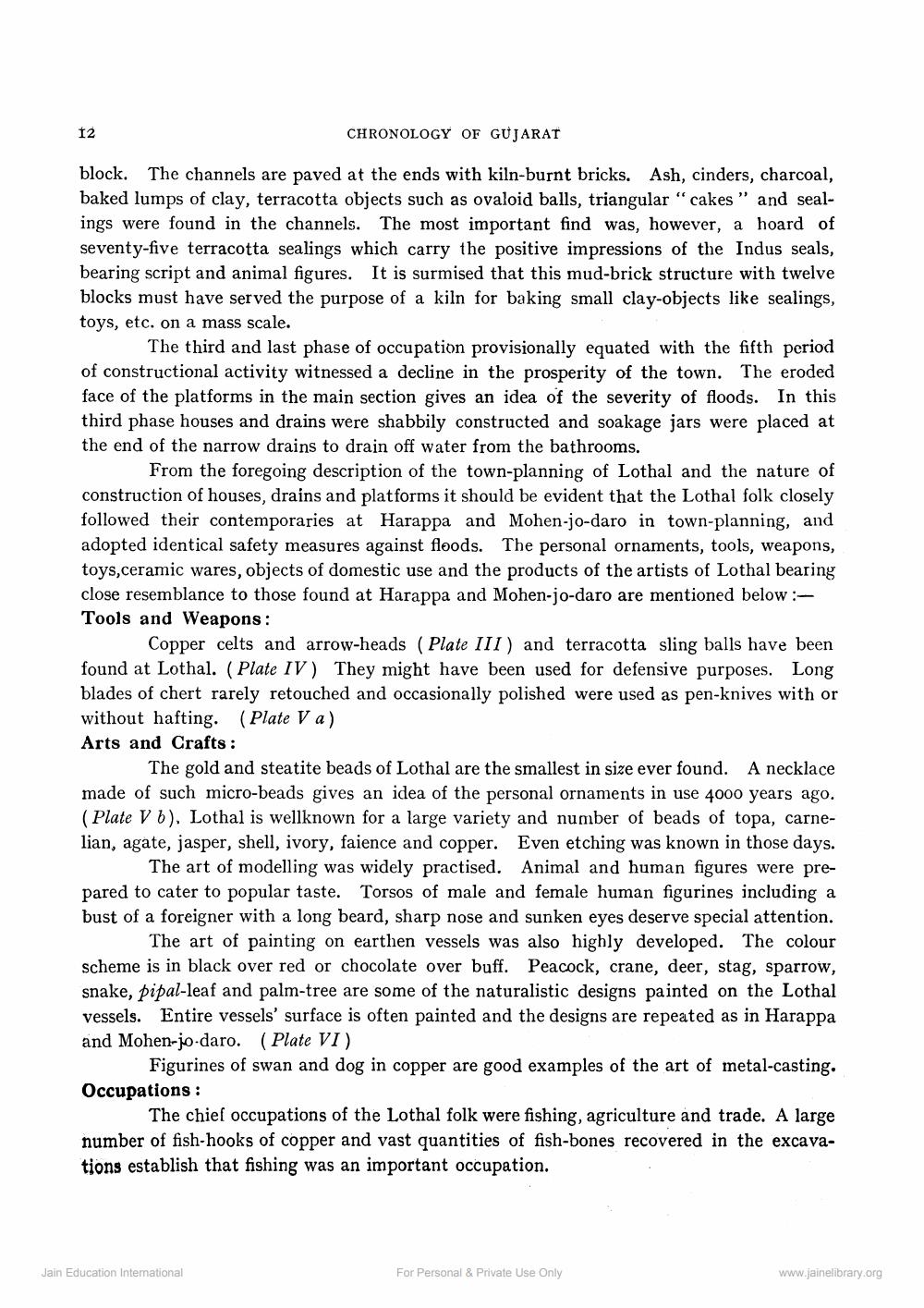________________
12
CHRONOLOGY OF GUJARAT
block. The channels are paved at the ends with kiln-burnt bricks. Ash, cinders, charcoal, baked lumps of clay, terracotta objects such as ovaloid balls, triangular "cakes" and sealings were found in the channels. The most important find was, however, a hoard of seventy-five terracotta sealings which carry the positive impressions of the Indus seals, bearing script and animal figures. It is surmised that this mud-brick structure with twelve blocks must have served the purpose of a kiln for baking small clay-objects like sealings, toys, etc. on a mass scale.
The third and last phase of occupation provisionally equated with the fifth period of constructional activity witnessed a decline in the prosperity of the town. The eroded face of the platforms in the main section gives an idea of the severity of floods. In this third phase houses and drains were shabbily constructed and soakage jars were placed at the end of the narrow drains to drain off water from the bathrooms.
From the foregoing description of the town-planning of Lothal and the nature of construction of houses, drains and platforms it should be evident that the Lothal folk closely followed their contemporaries at Harappa and Mohen-jo-daro in town-planning, and adopted identical safety measures against floods. The personal ornaments, tools, weapons, toys,ceramic wares, objects of domestic use and the products of the artists of Lothal bearing close resemblance to those found at Harappa and Mohen-jo-daro are mentioned below:Tools and Weapons :
Copper celts and arrow-heads (Plate III) and terracotta sling balls have been found at Lothal. (Plate IV) They might have been used for defensive purposes. Long blades of chert rarely retouched and occasionally polished were used as pen-knives with or without hafting. (Plate Va) Arts and Crafts :
The gold and steatite beads of Lothal are the smallest in size ever found. A necklace made of such micro-beads gives an idea of the personal ornaments in use 4000 years ago. (Plate V b). Lothal is wellknown for a large variety and number of beads of topa, carnelian, agate, jasper, shell, ivory, faience and copper. Even etching was known in those days.
The art of modelling was widely practised. Animal and human figures were prepared to cater to popular taste. Torsos of male and female human figurines including a bust of a foreigner with a long beard, sharp nose and sunken eyes deserve special attention.
The art of painting on earthen vessels was also highly developed. The colour scheme is in black over red or chocolate over buff. Peacock, crane, deer, stag, sparrow, snake, pipal-leaf and palm-tree are some of the naturalistic designs painted on the Lothal vessels. Entire vessels' surface is often painted and the designs are repeated as in Harappa and Mohen-jo-daro. (Plate VI)
Figurines of swan and dog in copper are good examples of the art of metal-casting. Occupations :
The chief occupations of the Lothal folk were fishing, agriculture and trade. A large number of fish-hooks of copper and vast quantities of fish-bones recovered in the excavations establish that fishing was an important occupation.
Jain Education Intemational
For Personal & Private Use Only
www.jainelibrary.org




